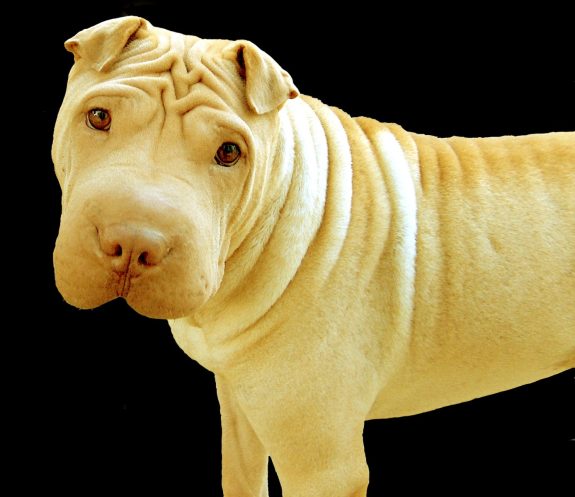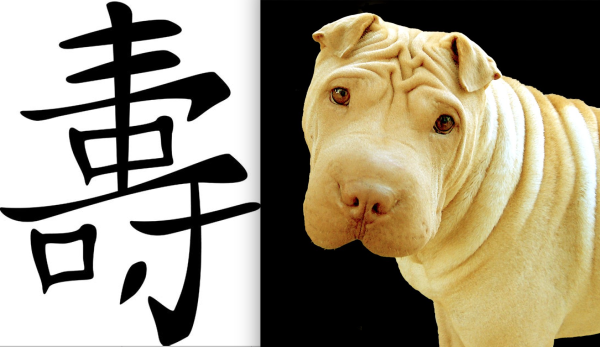
Chinese Shar-Pei owners admire their breed’s independence and intelligence, devotion with a touch of obstinance, and a regal personality above fawning over strangers. Everyone else remembers the breed for its wrinkles. Science tell us that the wrinkles are caused by the hyaluronic acid synthase 2 gene that encodes an enzyme synthesizing hyaluronan, a major component of the skin. Hyaluronan is like a gel around the skin cells that helps with hydration and elasticity. In a Shar-Pei, the gene creates too much hyaluronan, and that causes the breed’s epic wrinkles, particularly noticeable in Shar-Pei puppies.
We prefer the stories to be found in a Shar-Pei’s wrinkles, and we have found an assortment of them!
According to legend, the breed’s wrinkled skin scared off ghosts, and many owners kept a Shar-Pei in the house to ensure that the home was a spectral free zone, but there are “messages” in a Shar-Pei’s head wrinkles, too. The head, by the way, is sometimes described as being cucurbit shaped, the cucurbit a special type of Chinese gourd. It has also been described by the Chinese as Wo Lo Tau, or calabash head (the calabash referring to a type of bottle gourd).
In general, wrinkles over the dog’s face were once called “grandma’s face,” perhaps a reflection of the respect Chinese have for their elders. The dominant line in a wrinkle was called a”guarding line,” and some believed that the tighter it is, the better a Shar-Pei would be as a guard dog. The guarding line in the middle of the head going inward is called a rat line, and this indicates the dog is a good ratter.
Traditional Chinese thought puts great value on three aspects of life: The blessings of happiness, the goal of prosperity, and of longevity.
Some Shar-Pei have wrinkles on their forehead that look like the Chinese character, shou, a metaphor of coming fortune or prosperity. The character looks like this:
寿
And then there is Sau ji taun (also seen as “Sau ge tau”), the Chinese character for longevity: “Sau” means longevity, “ji” means character, and “tau” means head. According to legend, similar wrinkles denote eternal life, but the symbol also bears a similarity to the Chinese character of “king,” and for that reason, it’s also called “Wong’s feature” meaning, “sovereign’s look.”

Culturally speaking, the Chinese read a lot into those wrinkles, and we suspect that a Shar-Pei’s wrinkles change according to the dog’s mood and expression. Still, how marvelous to have legends associated with an ancient breed already rich with history.
